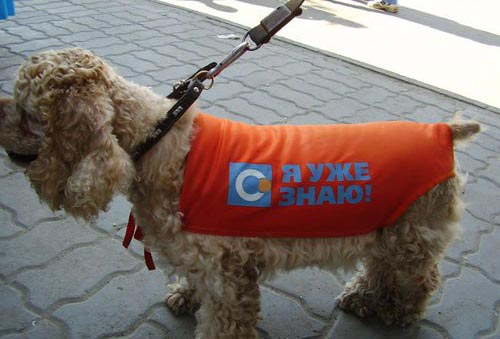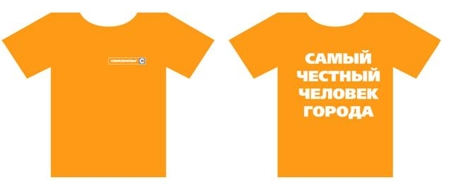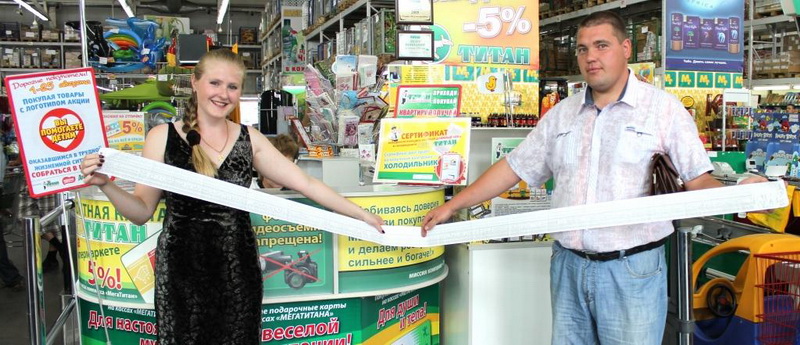Fight for the buyer or how to buy loyalty?
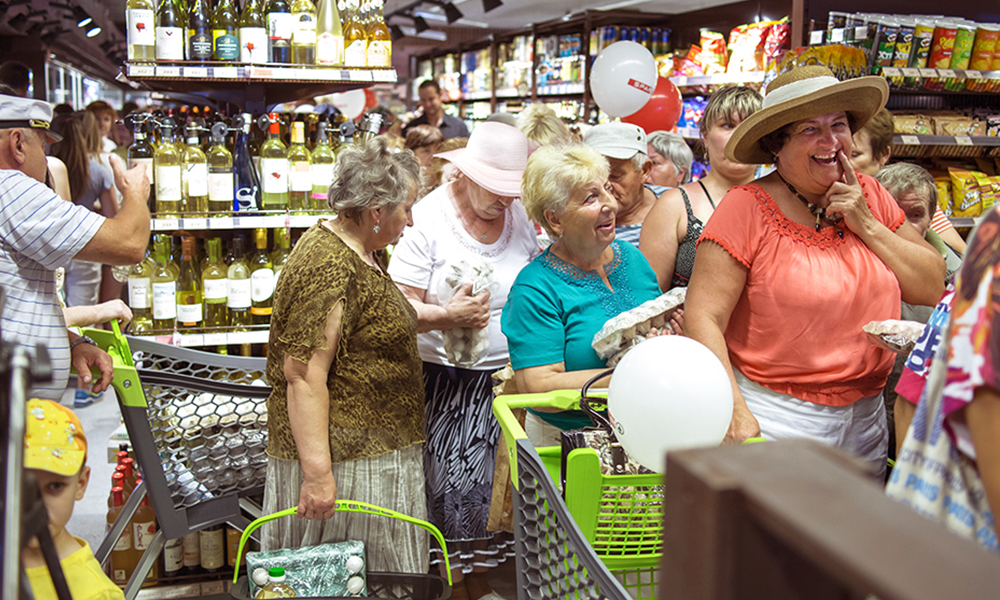
Now many specialized Internet resources, conferences and trainings only say that the classic marketing tools in the retail trade, like direct discounts, accumulative and bonus programs, are becoming a thing of the past. Phrases: “discounts don't keep the buyer”, “soon no one will wear discount cards” and questions like “do you have no CRM and digital marketing? And do buyers still come to you? ”- are heard everywhere from the lips of experts.
There is a grain of truth in these statements, but is it all so categorical? I do not dare to judge experts, but I will try to describe classical and modern methods of fighting for the buyer and consider their strengths and weaknesses.
')
For a long time, the Russian retail market (retail) in almost all of its segments has been developing very rapidly and growing, without requiring any unusual and complex tools for individual work with customers. A wide range of stores, “low” prices, convenient working hours and walking distance, attractive advertising on TV and billboards. It worked flawlessly and paid off one hundred percent.
However, over time, ever-increasing competition and market saturation demanded new retailers of marketing communication tools with customers.

I want to note right away - I will talk about the tools of working with customer loyalty in the segment of selling consumer goods (products, mid-priced clothing, electronics stores, building materials, FMCG (Fast Moving Consumer Goods) - everyday goods), that is, those stores which make up the heart of modern retail in Russia.
The topic of specialized stores (types of selling clothes for the military) and luxury segment shops will not be discussed in detail, in them the issues of working with buyers are completely different, I will give only a small comment.
Luxury stores use the eternal truth from David Ogilvy: “The higher the price, the more desirable the product becomes in the eyes of the buyer.” In such stores, buyers almost never look at the price tags, they don’t consider bonuses at all and will treat coupons for discount with scorn. But these buyers use purchases to emphasize their social status, raise their own level of self-esteem, well, and, of course, show off to friends. That is why luxury-segment stores often do not even issue cards, do not give discounts, but they have top-notch service, limited (often unique) products and high prices.
Here you can use Maslow's pyramid metaphor, in which clients of luxury-stores are on the topmost levels, on which there are no problems with money, but there are many “highly spiritual” needs for which the client is willing to pay generously.

Life stories:
From the history of Timberland. In the early 1980s, Timberland experienced difficult times. She produced high-quality pumps, the price of which was lower than that of the industry leader, Topsiders. It seemed that a good product and a low price should have worked for them, but things went bad. Then, Timberland made a very simple decision: they raised their prices so that they were much higher than the prices offered by Topsiders. Sales have increased dramatically.
Well, back to the stores for the sale of consumer goods and the goals of these data marketers marketing.
Let me remind you that even marketing network retailers often forget themselves: any business sets itself the final task of making a profit, and working with a customer is only a means to this goal, and one should not forget about it. One way or another, marketing tools are aimed at working with the customer, and if it is easier to say, the marketing specialist has 4 goals, arranged in a specific order:
- Attracting a buyer (poaching from competitors including);
- Customer retention (to make a regular customer);
- Getting additional benefits from working with the buyer;
- Return the departed buyer (put in a separate article).
STEP 1. Attracting new customers

At this step, everything is “very simple", you need to lure the buyer to the store by any means, and then the next stage tools will come into operation. In fact, everything is much more complicated. The most important task here is to find the offer that distinguishes you from the competition and will lead the buyer to you. As for the offer, which is valuable for a potential buyer, everything is individual and depends on the portrait of the buyer and the price policy of the store (this can be a discount, a gift upon first purchase, welcome bonuses, an invitation to meet with by the writer and so on).
It is also important how you convey your proposal. Buyers tend to point out your efforts and ignore all the channels you use. Need to try!
Classic

Use of any external non-targeted visual and audio advertising. This is an advertisement on TV, radio, billboards, transport, and even doorways of entrances.
Distributing or enclosing in boxes of catalogs or coupons with special offers.
This is the most familiar to all tools to attract, advertising on TV and understand the grandmother and the student. A plus is a fairly easy implementation of these tools, without complex and expensive IT investments. The main disadvantage is low conversion with mass non-targeted mailings. The reasons are clear - sending out to everyone in a row is most likely uninteresting offers to these individuals. Consequently, with improper use, very high costs in the void. However, with proper use (the right tools in the right place in the right place) can be very effective, especially at the start, a tool.
Providing discounts on competitors' cards (possibly with exchange cards)
In my opinion, a great way to get new customers from competitors, if you are not afraid of response. Although for some reason it is considered unethical in competition.
A simple coalition program with a supplier of related services (from the costume shop you are sent with a discount coupon to the shoe shop)
Agreement with serious partners is a very effective tool, you should definitely use it. It is important that partners are not your competitors, and the purchases in your stores perfectly complement each other (wine-cheese, costumes, shoes, etc.)
Well, my favorite:
Really working tool with a well-written proposal. Both the first customer and the cited friend, well, and your store, will naturally benefit.
Modern

Address Email and SMS mailings with personalized offers to the addresses and phone numbers received from partners
Promotion in social networks.
Here the key is the personalization of offers. That is, you know who you are sending the offer to, and must be sure that this offer is specifically interesting for this buyer. Well, or at least will not cause him rejection (such as a nun sms about discounts on contraceptives). In this case, it will be a very effective tool. It is also important to control the frequency of calls: regular SMS of the same type or banners with social networks will quickly turn customers away from you.
A serious disadvantage is that the use of such tools is worth a lot of money. With blunt mass mailings can not only help but also have a negative effect.
Connection as a partner to the coalition bonus programs “Thank you from Sberbank”, “Svyaznoy-club”, etc.
High entry threshold. For already serious retail chains, now this tool is on the rise, and, in my opinion, will develop. Indeed, it can be a decisive choice for the buyer when choosing between you and a competitor.
Public workshops with hidden advertising products.
An increasingly popular tool that allows you to get a real fan for many years. Expensive but effective in highly competitive markets. Do not try to sell the buyer a cool cocktail blender or a sewing machine, better teach him to prepare these cocktails and sew for free. For the blender and the machine, he will come to you, because your store is so cute.
Various flash mobs that are increasingly gaining popularity.
For now, an almost unclaimed tool in the Russian market, I will not describe it, but I will give a couple of examples below.
Interesting examples of unusual stocks to attract customers
Interesting events to attract customers holds "IKEA".
The company IKEA before opening its new store in one of the Japanese cities held an original action in the local subway. In the train cars, entirely rented for advertising, the interior was completely changed: the standard seats were replaced with cozy home sofas, bright curtains were hung, and the walls were decorated with frames for photographs. There was little direct advertising in the cars - stickers with the IKEA logo were placed on the glasses, and informative price tags were present on all the interior items.
Another example:
In 2008, IKEA held a promotion in St. Petersburg to launch a new store catalog. Passengers of the metro could observe in the cars of promoters dressed in bright T-shirts with the symbols of “IKEA”. Promoters held in their hands the promoted new IKEA catalog and read it with interest. The promotion involved 144 promoters who covered most of the metro stations.
And one more example:
In one of the major shopping centers in Shanghai was organized a colorful event "Mona Lisa of 10 thousand people." The main idea of this event is simple, as all ingenious - to attract the maximum number of buyers to the shopping center with an interesting action, in which everyone will participate. On-site visitors make selfies, and these self-portraits form famous paintings - “Mona Lisa” by Leonardo da Vinci and “The Girl with a Pearl Earring” by Jan Vermeer. Guests make self-portraits with their smartphones, but here they are printed out and pasted onto a large board (with the help of composition specialists). All these selfies become an integral part of a recognizable picture.
Well, another interesting campaign to attract customers
Shortly before the opening of the Svyaznoy store in Novosibirsk, charming dogs appeared on the streets of the city, dressed in branded overalls with the words “I know”.
A few days later the dogs suddenly disappeared from the streets of the city. In the media, instantly appeared announcements of the disappearance of animals. Residents of Novosibirsk called the hotline and excitedly talked about where and when they saw these dogs. At the end of the conversation, the girl thanked the callers, invited to the opening of the Svyaznoy mobile communication center.
At the same time, residents in various parts of the city seemed to find lost orange wallets. Inside the wallets - an invitation to open a store and a notice of receipt of gifts upon presentation of this wallet.
During the opening of the Svyaznoy mobile communication center, a sales record was set. In exchange for an invitation from an orange wallet - T-shirts "The most honest man of the city."
STEP 2. Customer retention

Well, the buyer came and even bought something from you. At this point, it is important for you to realize the BIG difference between the first purchase and the subsequent ones. So far, the newly attracted buyer has just entered, there is no guarantee of his return, and we need to fight for it right now. Leaving aside the level of service, no queues, clean floors and the range is a topic for a separate article, assuming that you are at the top of these issues.
Let's talk about marketing tools.
Classic
Discounts on goods relevant to the buyer
The game with the price is the most understandable and obvious criterion for choosing a store among competitors. Naturally, there is no need to give discounts for anything. But whatever one may say - this is a direct loss of margin. Often not even affecting purchasing power, since the discount is provided to everyone, even those who are not looking at price tags. Nevertheless, it is an eternal toolkit that never goes anywhere. Quick and easy way to attract and retain the buyer, but you need to understand that without additional tools, this buyer will go to a competitor as soon as he gets a lower price.
Cumulative discount program
The essence of the program is simple: with an increase in the volume of purchases, the buyer receives an increasing discount (or bonuses, or gifts), which ties him to the store. The nuance is the moment when the buyer reaches the highest level, then he has no incentive to make further purchases. Here, various VIP offers can be used (special gifts, the right to be the first to buy exclusive goods, out-of-turn service, etc.).
Bonus program with the accrual of bonuses for purchases.
Coupon program with the issuance of coupons for a discount on the next purchase.
These tools are interesting because the store does not offer a discount to customers directly in the current purchase, but only during a second visit, which at least motivates the buyer to return at least one more time. The use of coupons is easier to implement, the use of bonus programs looks more solid and allows you to arrange more complex and interesting offers.
Collect stamps for purchases and get a dog, pots, smurfs
Everyone is familiar. It works, absolutely for sure. The main thing is that the offer is interesting, and not a discount on knives. The ideal for me is the exchange of stamps for cute dogs in the "Carousel", which caused just unprecedented excitement.
Modern
Personal offers on products interesting to the buyer on the basis of purchases made earlier
Personal information about upcoming promotions and events
Current trend: now everyone wants to provide buyers with offers based on the real interests of the buyer. You love and buy Czech beer - get a personal offer for a promotion from Krushovitsy. I bought a Canon printer - a monthly discount on a new cartridge.
Further more - the buyer buys spices in your store, but does not buy meat (read - buys somewhere else) - send a coupon with a discount on meat and a description of your wide assortment of meat.
It sounds all enchanting, but the cost of implementing such tools is very high and is available only to very large businesses.
Use of customer survey data when communicating with him
Congratulations and additional personal suggestions for memorable buyer dates
Contact the buyer by name at the checkout in the advertisement on the check, congratulate and give him a discount on his birthday.
It's simple, but the buyer will definitely appreciate the personal attitude.
The introduction of game mechanics
Very interesting mechanics, turn the next customer visit to the store into a game that you want to play again and again. Type on the checks riddles, anecdotes or sudoku. Arrange an instant lottery right in the cashier’s check.
Life stories:
An interesting example from the American company Target!
A pregnant customer is doubly valuable to the seller. A store that has learned about a customer’s pregnancy before others will tie it to its store (discounts, special offers, etc.) not only before delivery, but also for a considerable period after.
In Target, analyzing about a quarter of hundreds of parameters (the type of products being purchased, volumes, frequency, etc.), with a high degree of certainty, future mothers were identified, the date of birth was predicted, and even the gender of the child. And then they sent her coupons for special hygiene products, lingerie for pregnant women, and, maybe, for diapers. It was with such a set of pieces of paper that an angry man once appeared at the Target shop. Coupons sent to the name of his schoolgirl daughter, who seemed to be thinking about motherhood early. But a few days later, in a conversation with the manager who called to apologize, the man already apologized himself: Target computers learned about the schoolgirl's pregnancy earlier than the father.
There are successful applications of personal offers already in Russia. One of the leaders of the Russian food retail chain, Lenta, successfully uses the distribution of personal offers to customers through various interaction channels (sending printed coupons to postal addresses, as well as electronic offers via SMS and e-mail). Coupons are targeted and provide discount and bonus offers based on purchase history, that is, relevant for this particular buyer. Needless to say, the stock is popular with buyers.
Yet from difficult to simple. You can keep the buyer without complicated technical solutions.
A shop selling high-end meat in St. Petersburg, when purchasing certain varieties, prints for the buyer an additional “check” with information about storage conditions and methods of cooking meat. The buyer is always pleased to see that he is not just selling goods, but also taking care of his satisfaction with the purchase.
Another, this time a comic example, implemented by our customers. For all male buyers, when buying candy and any champagne in one checkout, the cashier printed an additional “check” with a reminder of the purchase of contraceptives. The action, of course, is on the verge of a foul, but it worked! Few people escaped a smile when receiving such a check, and word of mouth very quickly spread rumor about the store around the district.
STEP 3. Getting additional benefits from working with customers

Let me remind you once again that the purpose of any commercial enterprise is to obtain benefits, and previously attracted buyers can be used in mutual interests to achieve this holy goal. Retail has already figured out the issue of gaining benefits for a long time, so I will not divide the tools into classical and modern, but simply list and give an interesting example. In order for the buyer to spend more money, he can be motivated to buy more and / or come more often.
Increase average purchase
- Promotional sales for certain products
- Discount on the quantity of goods purchased (3 for the price of 2, with the purchase of more than 5, etc.)
- Discount on every N-position in the check (of course, the cheapest)
- Additional discount and / or bonuses when buying more than a certain amount (option with steps - 10 points for every 500 rubles)
Buyer's motivation to return more often
- Accrual of bonuses with a limited duration
- Issuance of coupons and other personal offers with a short period of validity
Shopping cart extension
- Gifts or discounts when buying a specific set of products
- Offers to buy related products
A great example from life. A very interesting action was organized by one of our customers, turning the purchase process into a game. The action started under the defiantly intriguing title “The winner is the one who has the longest”, buyers received various gifts and coupons for a discount for the length of ... the check. A super prize for someone who has the longest check. The ladies giggle, the men buy everything with a smile. The action was a success, a record of the length of the check in history has not been preserved.
Another example of the action, perfectly using the psychology of buyers. The use of discounts with the restriction “no more than X in hands”. An interesting experiment was conducted by one of the regional retailers. A “no more than 3 in hand” notice was hanged on most of the goods being sold, although the goods were already sold below expectations even with the sale price. Buyers, looking at the plates with restrictions, regarded it as a fact that the goods quickly ends, there is a great demand for it, the price is excellent, and you need to buy. Sales of such goods increased significantly. Apparently, the Soviet past makes itself felt - "Take it while you are."
Conclusion
It's time to sum up. With the above, I really wanted to say that there is no good or bad marketing toolkit, and even more outdated, just for each case has its own solution. Remember that any marketing activity must have a clearly set goal and criteria for achieving it, then the results will come. Otherwise, any activity is wasted money. Discounts for a long, long time will not disappear. Good luck in the fields of struggle for the buyer!
PS And of course, even Apple marketers will not save if you have everything in your store like this:
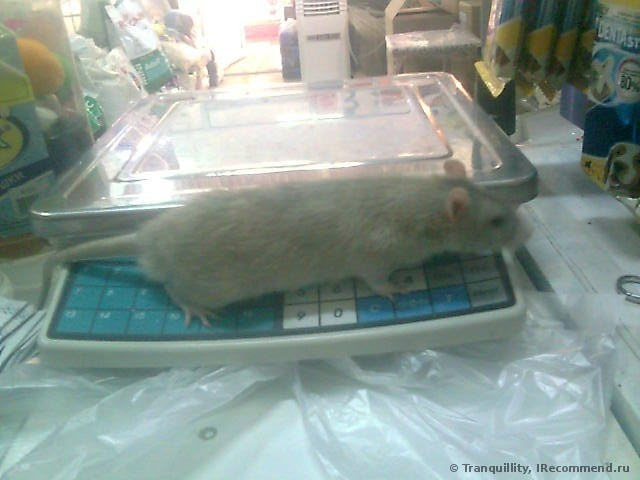

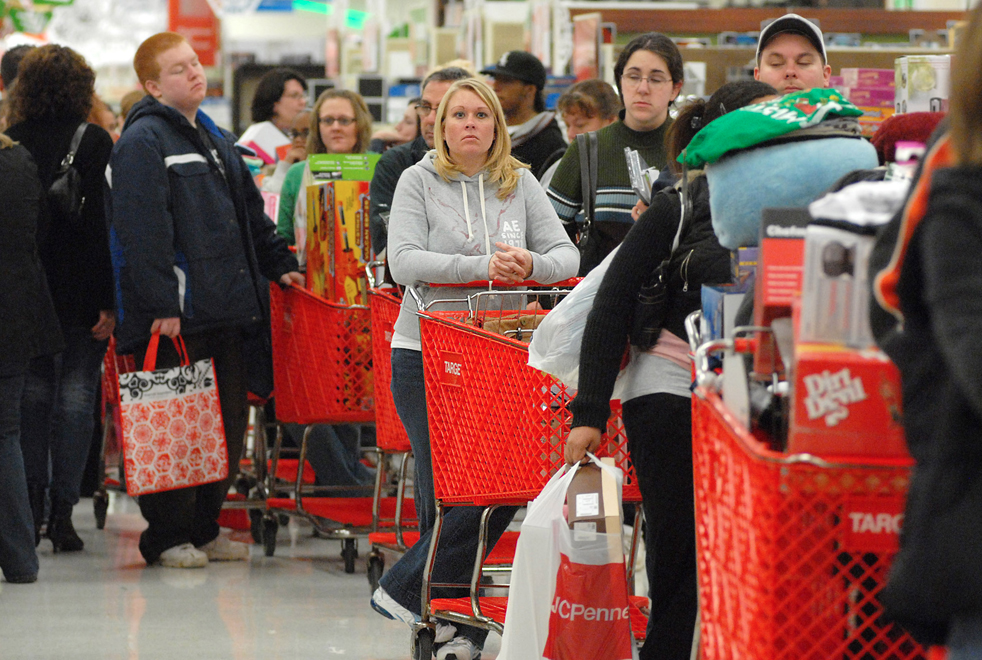
Source: https://habr.com/ru/post/243235/
All Articles


